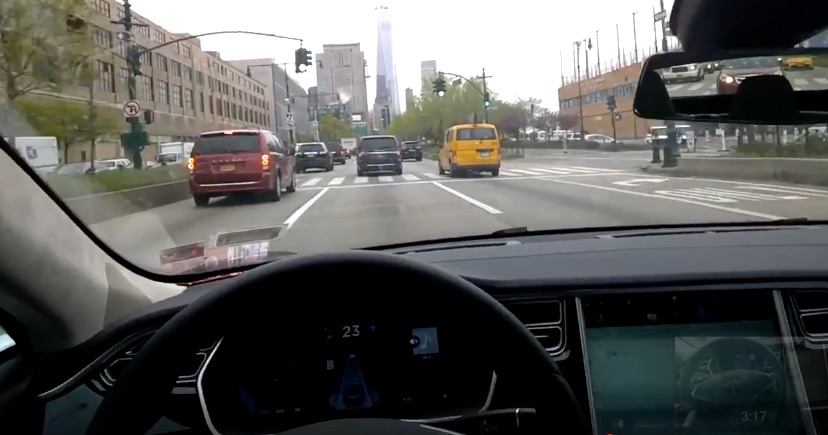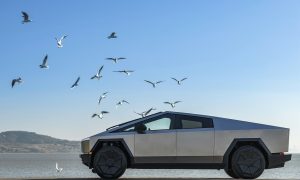Your Tesla eases its way through the choked streets of Los Angeles and climbs the Sierra Nevada. It glitters with the lights of Las Vegas before continuing over to Yellowstone National Park, where the geysers blow and the buffalo stare from roadsides. Meandering through the Badlands and by Mount Rushmore, it pushes upward in elevation into the Rockies and then down to Denver. After the Tesla powers past the Midwest’s cornfields, it propels its way through Chicago’s multiple highway lanes, wedged between tractor trailers. In the final leg of the trip, the Tesla dips and zips through Pennsylvania’s rolling hills and maneuvers through the congested streets of Times Square, parking itself.
These Northern route stats: 3,241 miles in 54 hours, and your Tesla did all the driving for you. It was capable of seeing through heavy rain, fog, dust, and two cars ahead.
That’s the vision, or Tesla Vision, rather, of the not-so-distant future as announced by Tesla CEO Elon Musk during a press conference call on Wednesday, October 19. Outlining a future of self-driving cars, Musk set a goal for Tesla to make a fully autonomous road trip from Los Angeles to New York by the end of 2017. The trip would occur “without the need for a single touch” from the driver, including recharging the car’s battery. Owners would be able to Summon their vehicle, through a press of a button on an app, and the car would drive itself to wherever they are and pick them up – even if it’s across the country. The vehicle would charge on its own along the way without human intervention using something similar to the Snakebot that Tesla revealed last year.
“Our goal— I feel pretty good about this goal — we’ll be able to do a demonstration drive of full autonomy all the way from LA to New York. So basically from a home in LA to, let’s say. dropping you off in Times Square, in New York, having the car park itself by next year. Without the need for a single touch, including the charger.”, says Musk.
When you want your car to return, tap Summon on your phone. It will eventually find you even if you are on the other side of the country
— Elon Musk (@elonmusk) October 20, 2016
This Level 5 “full self-driving or driverless capacity” will now be available on the 2,000 cars a week that Tesla is currently manufacturing. That means the Tesla Model S and Model X vehicles in production as well as the upcoming Model 3 will have what Musk terms “Hardware 2,” which allows for full self-driving capability at “a safety level substantially greater than that of a human driver,” according to Musk. The hardware includes:
- 8 surround cameras which provide 360 degree visibility around the car at up to 250 meters of range;
- 12 updated ultrasonic sensors that allow detection of both hard and soft objects at nearly twice the distance of the prior system; and,
- a forward-facing radar with enhanced processing that provides additional data on a redundant wavelength.
The system, which has been more than a year in testing, will see continual software updates as the system learns through data collected from ‘Shadow Mode’ and self-driving algorithms are refined. Musk said that it would be some time before Tesla’s software would advance to meet capabilities of Hardware 2, so it will be disabled until it “reaches parity following full validation with Hardware 1, probably in December.” Updates are likely to occur every 2-3 months thereafter. Nonetheless, and in lieu of required regulatory approval, Musk claims that the safety level of this autonomous driving will be at least twice that of a human, or better.
Tesla’s current Autopilot system has been replaced with a newer generation ‘Enhanced Autopilot’ that will leverage the new suite of sensors to provide more precise lane keeping, lane changes without driver input, the ability to exit freeways, and an overall smoother and safer experience. Enhanced Autopilot and the Fully Self-Driving Capability, autonomous mode, is being made available through Tesla’s Model S and Model X Design Studio as optional upgrades.











